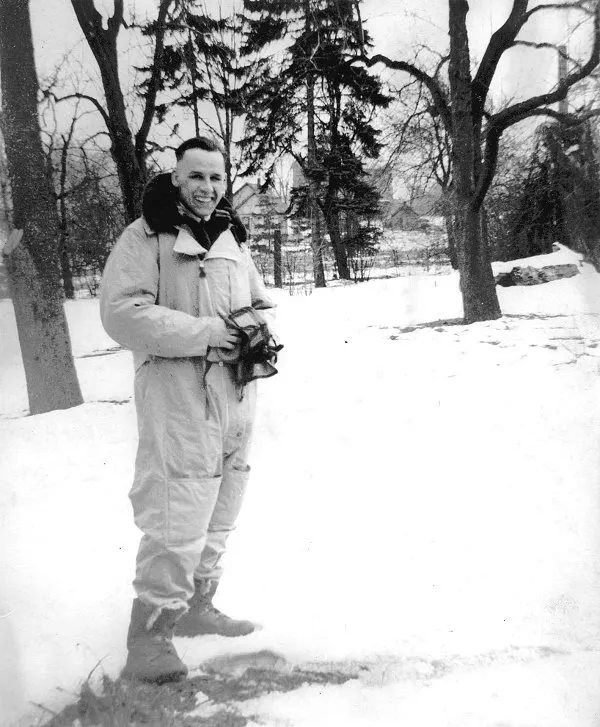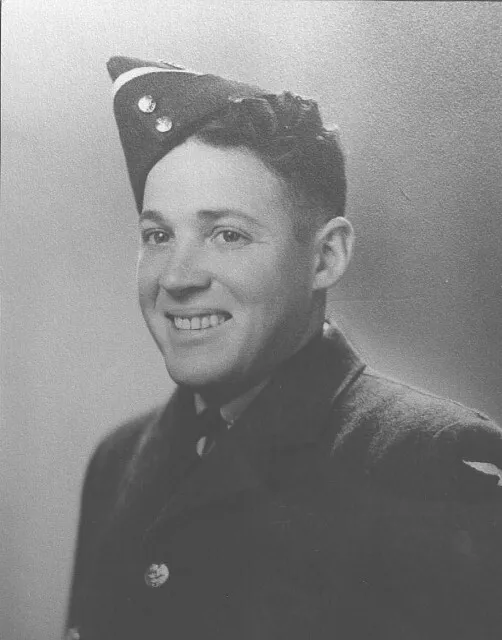Flight Sergeant McLeod's body was found at sea 1943-04-26 and He was laid to rest in Fovrfelt cemetery in Esbjerg, Denmark 1943-04-30
McLeod, Ivan Gordon (Flight Sergeant)
Killed in Action 1943-January-30
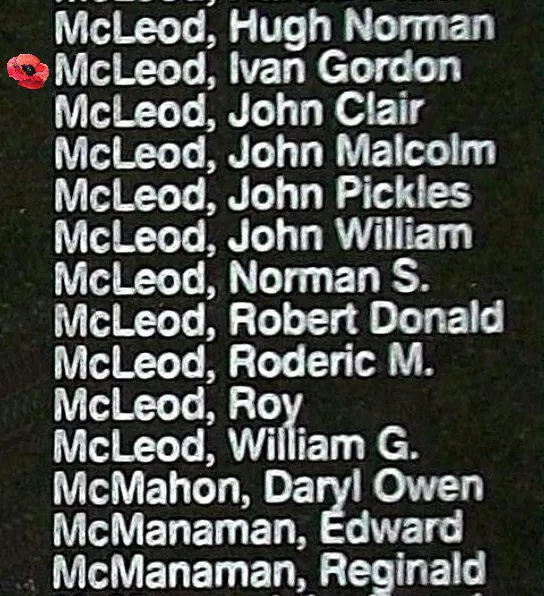

Birth Date: 1914-January-04
Born: Edmonton, Edmonton Census Division, Alberta, Canada
Parents: Son of Ivan Ross McLeod and Elizabeth Audrey (nee Smith) McLeod of Edmonton, Alberta
Spouse: Husband of Evelyn Vaughan (nee Willis) McLeod whom he married at Edmonton, Alberta, 1942-02-27
Home: Edmonton, Alberta
Enlistment: Edmonton, Alberta
Enlistment Date: 1941-June-02
Service
RCAF
Unit
426 (B) Sqn- Squadron
On wings of fire
Base
RAF Dishforth
Rank
Flight Sergeant
Position
2nd Pilot
Service Numbers
R/105778
Crew or Other Personnel
Wellington Z1680
Wellington serial: Z1680

Vickers Wellington B. Mk. III (Serial No. X3763), coded KW-E, No. 425 'Alouette' (B) Squadron, RCAF, late summer of 1942
The Vickers Wellington was a British twin-engined, long-range medium bomber. It was designed during the mid-1930s at Brooklands in Weybridge, Surrey. Led by Vickers-Armstrongs' chief designer Rex Pierson, a key feature of the aircraft is its geodetic airframe fuselage structure, which was principally designed by Barnes Wallis. Development had been started in response to Air Ministry Specification B.9/32, issued in the middle of 1932, for a bomber for the Royal Air Force. This specification called for a twin-engined day bomber capable of delivering higher performance than any previous design.
The Wellington was used as a night bomber in the early years of the Second World War, performing as one of the principal bombers used by Bomber Command. During 1943, it started to be superseded as a bomber by the larger four-engined "heavies" such as the Avro Lancaster. The Wellington continued to serve throughout the war in other duties, particularly as an anti-submarine aircraft.
It holds the distinction of having been the only British bomber that was produced for the duration of the war, and of having been produced in a greater quantity than any other British-built bomber. The Wellington remained as first-line equipment when the war ended, although it had been increasingly relegated to secondary roles. The Wellington was one of two bombers named after Arthur Wellesley, 1st Duke of Wellington, the other being the Vickers Wellesley.
In August 1936, an initial order for 180 Wellington Mk I aircraft, powered by a pair of 1,050 hp (780 kW) Bristol Pegasus radial engines, was received by Vickers; it had been placed so rapidly that the order occurred prior to the first meeting intended to decide the details of the production aircraft. In October 1937, another order for a further 100 Wellington Mk Is, produced by the Gloster Aircraft Company, was issued; it was followed by an order for 100 Wellington Mk II aircraft with Rolls-Royce Merlin X V12 engines. Yet another order was placed for 64 Wellingtons produced by Armstrong Whitworth Aircraft. With this flurry of order and production having been assured by the end of 1937, Vickers set about simplifying the manufacturing process of the aircraft and announced a target of building one Wellington per day.
A total of 180 Wellington Mk I aircraft were built; 150 for the RAF and 30 for the Royal New Zealand Air Force (RNZAF) (which were transferred to the RAF on the outbreak of war and used by 75 Squadron). In October 1938, the Mk I entered service with 9 Squadron. The Wellington was initially outnumbered by the Handley Page Hampden (also ordered by the Ministry to B.9/32) and the Armstrong Whitworth Whitley (to B.34/3 for a 'night' bomber) but outlasted both rival aircraft in service. The Wellington went on to be built in 16 separate variants, in addition to two training conversions after the war. The number of Wellingtons built totalled 11,462 of all versions, a greater quantity produced than any other British bomber. On 13 October 1945, the last Wellington to be produced rolled out. Wikipedia
Unit Desciption
426 (B) Sqn On wings of fire ("Thunderbird")
History of the Squadron during World War II (Aircraft: Wellington III, Lancaster II, Halifax III, VII, Liberator VI, VIII:)
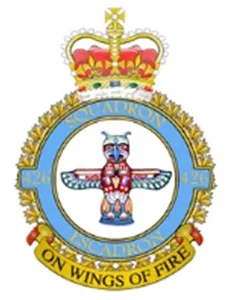
426 Squadron was formed at Dishforth, Yorkshire, UK ![]() on October 15, 1942 as the 24th RCAF squadron and seventh bomber squadron to be formed overseas in WWII. Originally it was a member of No 4 Group, RAF Bomber Command, flying Vickers Wellington Mk III aircraft with the squadron code OW as part of the strategic bombing of Germany. On January 1, 1943 it became part of No 6 (RCAF) Group, while remaining at Dishforth until June 1943. On June 17, 1943 it moved to Linton-on-Ouse, Yorkshire.
on October 15, 1942 as the 24th RCAF squadron and seventh bomber squadron to be formed overseas in WWII. Originally it was a member of No 4 Group, RAF Bomber Command, flying Vickers Wellington Mk III aircraft with the squadron code OW as part of the strategic bombing of Germany. On January 1, 1943 it became part of No 6 (RCAF) Group, while remaining at Dishforth until June 1943. On June 17, 1943 it moved to Linton-on-Ouse, Yorkshire. ![]() , as part of No 62 (RCAF) Base, at the same time re-equipping with Avro Lancaster Mk II aircraft. In April/May of 1944 , it again re-equipped, this time with Handley Page Halifax Mk III and VII aircraft, which it flew until the end of hostilities in Europe. At that time, to meet a need for long range transport in support of the proposed Tiger Force to attack Japan, it was re-designated as a Transport squadron in May 1945 and converted to Consolidated Liberator C Mk VI and VIII. After the surrender of Japan before the Tiger Force became operational, between October and December 1945 the squadron ferried troops from and around Egypt, India and the Far East. The squadron was disbanded at Tempsford, Bedfordshire, UK
, as part of No 62 (RCAF) Base, at the same time re-equipping with Avro Lancaster Mk II aircraft. In April/May of 1944 , it again re-equipped, this time with Handley Page Halifax Mk III and VII aircraft, which it flew until the end of hostilities in Europe. At that time, to meet a need for long range transport in support of the proposed Tiger Force to attack Japan, it was re-designated as a Transport squadron in May 1945 and converted to Consolidated Liberator C Mk VI and VIII. After the surrender of Japan before the Tiger Force became operational, between October and December 1945 the squadron ferried troops from and around Egypt, India and the Far East. The squadron was disbanded at Tempsford, Bedfordshire, UK ![]() on January 1, 1946.
on January 1, 1946.
Overall, the squadron flew 268 bombing missions involving 3233 individual sorties, for the loss of 88 aircraft. 8997 tons of bombs were dropped. There were 242 Transport sorties. The squadron members were awarded 2 DSO's, 130 DFC's and 2 Bars to DFC, 1 CGM, 25 DFM's1 DFC(USA) and 13 MiD's. [Possibly, the most heroic act realized by a member of the squadron during the war took place on October 20, 1943, when Flight Sergeant Stuart (the pilot) and his crew were sent to bomb Leipzig. During the mission he was engaged by enemy fighters, Messerschmitt Bf 109 and Junkers Ju 88, initially managing to shake them off but not before having his aircraft rendered almost unfit to fly, leaving it with shattered cockpits and gun turrets; holes in the fuel tanks, damaged hydraulics and no navigation instruments. Against all odds Stuart decided to continue the mission and successfully bombed his target before guiding his crippled aircraft home. He was awarded the Conspicuous Gallantry Medal.] Battle Honours were: English Channel and North Sea 1943, Baltic 1943, Fortress Europe 1943-44, France and Germany 1944-45, Biscay Ports 1943-44, Ruhr 1943-45, Berlin 1943-44, German Ports 1943-45, Normandy 1944, Rhine, Biscay 1943. Wikipedia, Moyes, Kostenuk and Griffin
Squadron History (Bomber Command Museum PDF)
Maps for Movements of 426 Squadron 1942-46
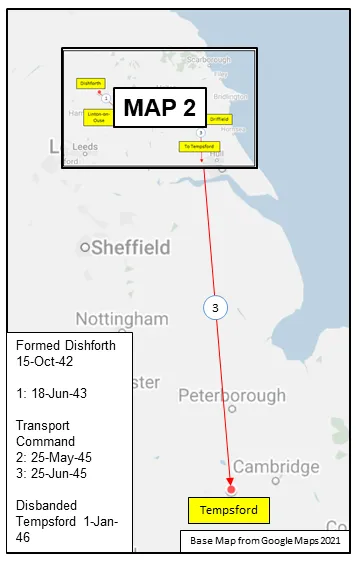
MAP 1: 426 Squadron Movements 1942-46 (right-click on image to display enlarged in new tab)
|
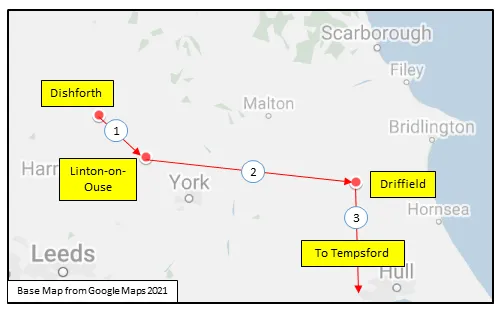
MAP 2: 426 Squadron Movements 1942-45 (detail of Map 1)
|
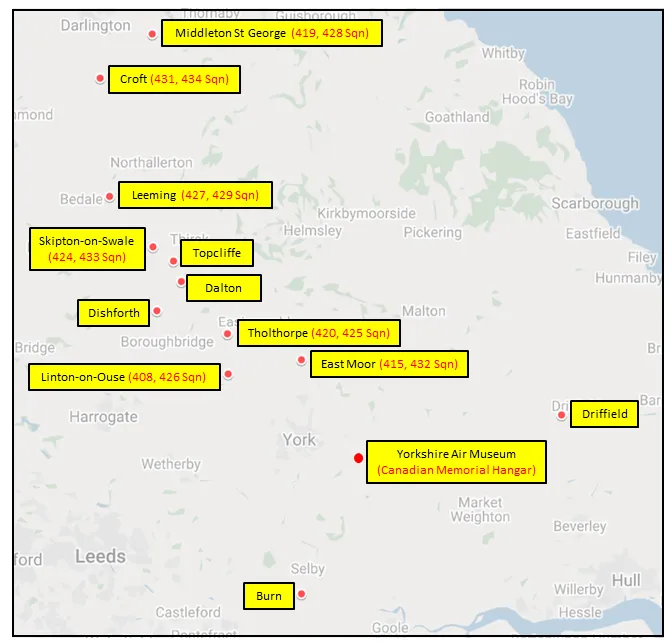
MAP 3: 6 Group Bomber Bases 1943-1945
|
426 Squadron History Summary 1942-46
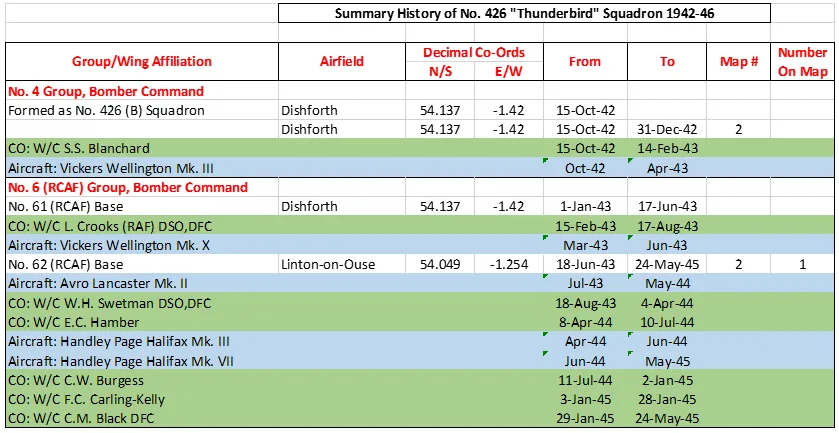
426 Squadron History Summary 1942-46 Page 2


History of the Squadron Post-WWII (Aircraft: Dakota, North Star, Yukon, Hercules)
The squadron was re-formed as a Transport unit at Dartmouth, Nova Scotia ![]() on 1 August 1946 from the Dartmouth portion of No. 164 (Transport) Squadron. It moved to Dorval (Montreal), Quebec
on 1 August 1946 from the Dartmouth portion of No. 164 (Transport) Squadron. It moved to Dorval (Montreal), Quebec ![]() in March 1947 and was re-equipped from Dakota to four-engine North Star aircraft for long-range transport duty. From July 1950 to June 1954 the squadron was detached to McChord Air Force Base in Washington, USA
in March 1947 and was re-equipped from Dakota to four-engine North Star aircraft for long-range transport duty. From July 1950 to June 1954 the squadron was detached to McChord Air Force Base in Washington, USA ![]() , from where it was employed on the Korean airlift (Operation “Hawkâ€) and made 600 round trips across the North Pacific between Vancouver and Tokyo, logging 34,000 flying hours and carrying 13,000 personnel and 7,000,000 pounds of freight and mail without mishap. A typical Korean Air Lift route for 426 Squadron aeroplanes was a physically and mentally demanding fifty-hour round trip flight from McChord to Japan and back with stops at Elmendorf Air Force Base (Alaska), Shemya (Aleutian Islands), Handed and Misawa Air Base (Japan). In 1956 it airlifted United Nations Emergency Force personnel and equipment to the Middle East and, in 1960-62, to the Belgian Congo. The unit moved to Trenton, Ontario
, from where it was employed on the Korean airlift (Operation “Hawkâ€) and made 600 round trips across the North Pacific between Vancouver and Tokyo, logging 34,000 flying hours and carrying 13,000 personnel and 7,000,000 pounds of freight and mail without mishap. A typical Korean Air Lift route for 426 Squadron aeroplanes was a physically and mentally demanding fifty-hour round trip flight from McChord to Japan and back with stops at Elmendorf Air Force Base (Alaska), Shemya (Aleutian Islands), Handed and Misawa Air Base (Japan). In 1956 it airlifted United Nations Emergency Force personnel and equipment to the Middle East and, in 1960-62, to the Belgian Congo. The unit moved to Trenton, Ontario ![]() in September 1959, and in January 1962 to St Hubert (Montreal) Quebec
in September 1959, and in January 1962 to St Hubert (Montreal) Quebec ![]() . The squadron was disbanded on 1 September 1962.
. The squadron was disbanded on 1 September 1962.
It reformed again as 426 Transport Training Squadron on May 3, 1971, at Uplands, Ontario ![]() . The squadron moved to Trenton in August 1971 where it remains today, conducting training on the CC-130 Hercules.The squadron has carried out many tasks since the end of Korean War, including casualty evacuations, Royal tours and other VIP transport, and United Nations air lift operations. Thunderbird has worked in many places: the Arctic, the Middle East and Europe, the Congo and Japan.
. The squadron moved to Trenton in August 1971 where it remains today, conducting training on the CC-130 Hercules.The squadron has carried out many tasks since the end of Korean War, including casualty evacuations, Royal tours and other VIP transport, and United Nations air lift operations. Thunderbird has worked in many places: the Arctic, the Middle East and Europe, the Congo and Japan.
426 Transport Training Squadron carries out classes of different courses every year to generate operationally effective air mobility aircrew and technicians in support of Canadian Armed Forces (CAF) operations. The squadron also has dedicated personnel assigned to provide operational test and evaluation and system support to Air Mobility fleets. In 1995, the Squadron’s school underwent extensive renovations and acquired state-of-the-art computerized training aids. In spring 2000, the Squadron completed an upgrade to its OFS-130H flight simulator. The changes included a new motion base, new visual system and upgraded avionics equipment. The Squadron also opened a new building housing the Cargo Compartment Trainer for the CC-130H Hercules. Anticipating the future needs of the Air Mobility community and the newly procured CC-130J Hercules, the school expanded its facilities in 2012. The Air Mobility Training Centre (AMTC) was designed and built to accommodate the latest in aircrew and technician simulation, making it one of the most advanced training facilities in the world. The building serves as the home of 426 Squadron staff, whose job it is to train and prepare aircrew, technicians and aeromedical personnel for employment on the CC-130J, CC-130H, and CC-150 Polaris aircraft. Wikipedia, Kostenuk & Griffin, and www.canada.ca/en/air-force/corporate/squadrons/426-squadron.html
